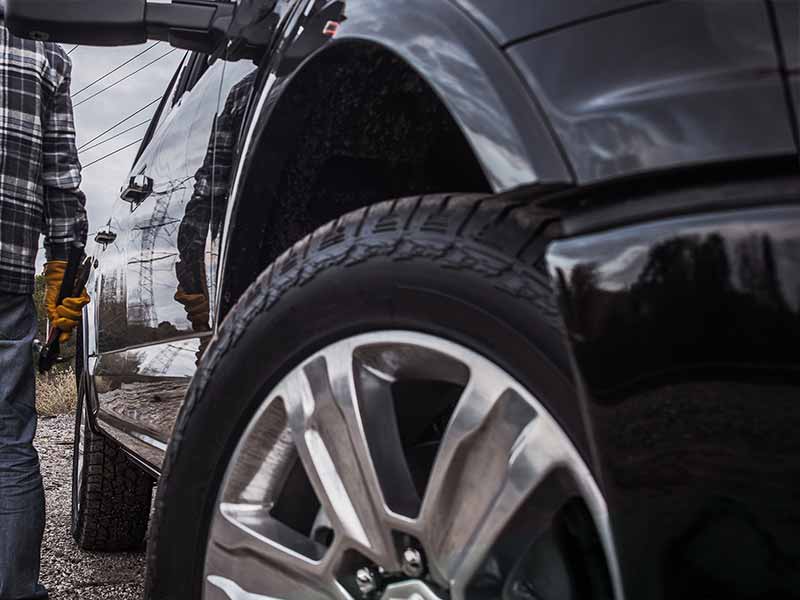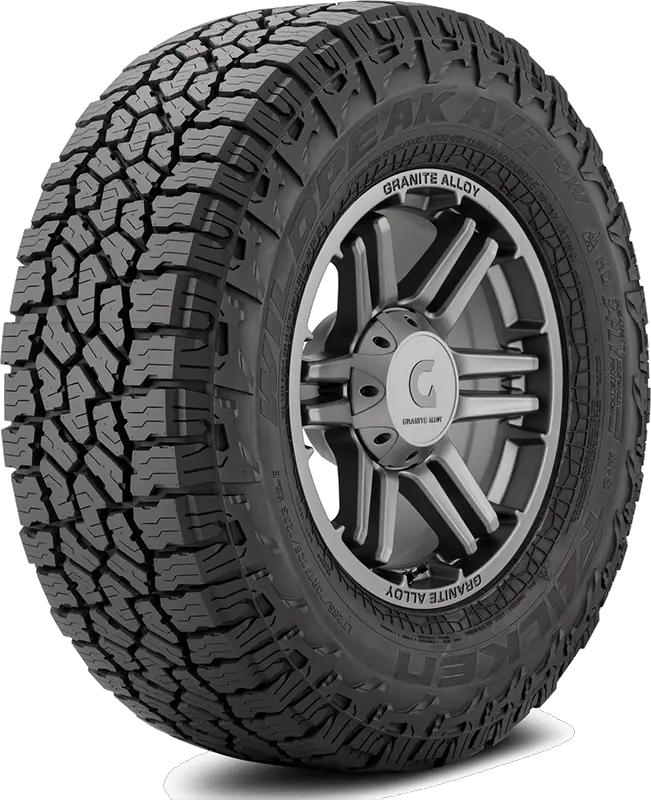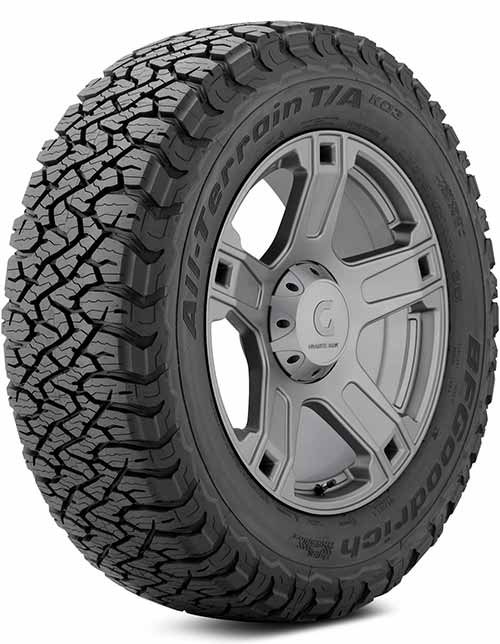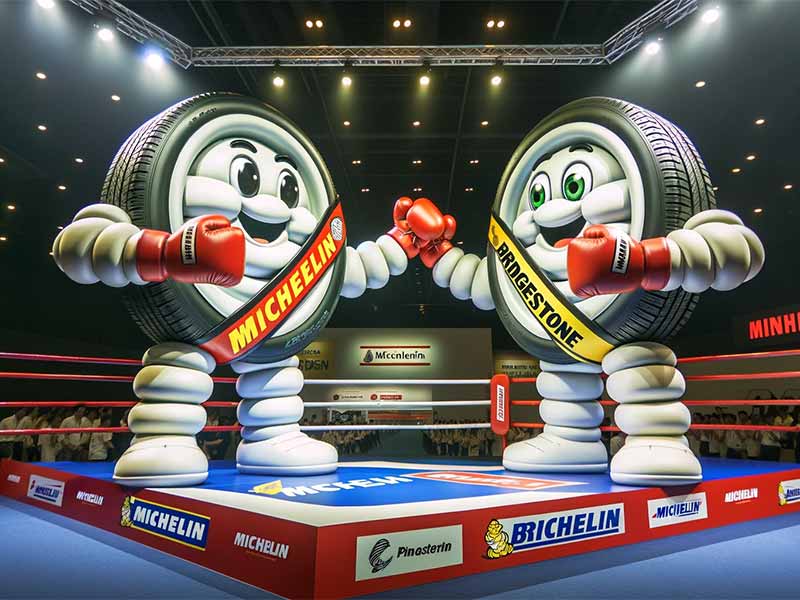Ever scratched your head wondering if the front tires should have more air than the rear ones, or vice versa? Getting the tire pressure right can feel like a puzzle, especially when you’re aiming for that perfect balance of safety, comfort, and fuel efficiency.
Truck Tire Pressure Front Vs Rear
For most light trucks, the recommended tire pressure typically ranges between 30 to 35 PSI for both front and rear tires.
3/4 and 1 ton trucks often require higher pressures, with front tires ranging from 50 to 65 PSI and rear tires between 60 to 80 PSI, depending on the vehicle’s specifications and load.
In this article, we’ll explore the importance of tire pressure, how to check and adjust it, the impact of weight distribution on tire pressure needs, and the differences in tire pressures between light trucks and heavier 3/4 and 1 ton trucks.
Let’s take a closer look.
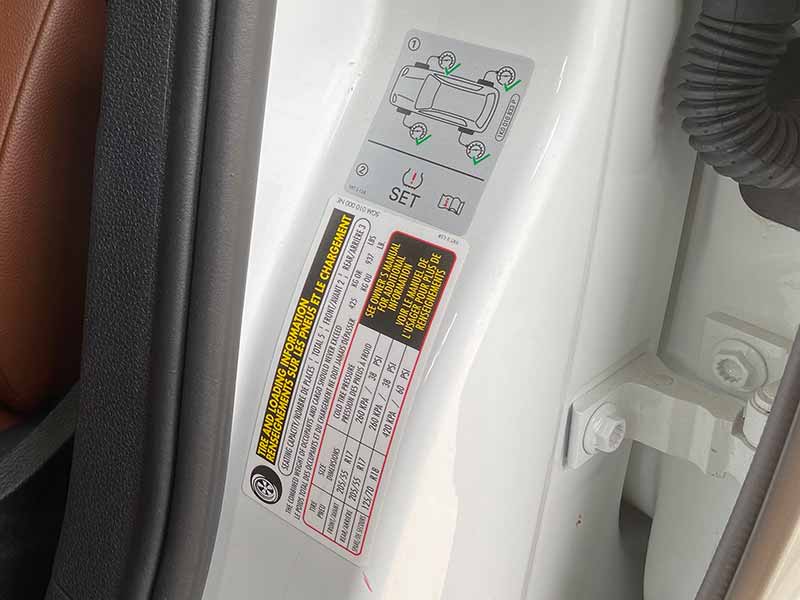
Recommended Tire Pressure for Trucks
Every vehicle has a specific amount of air that should be in its tires. This amount is called the “recommended tire pressure.” It’s set by the people who made the vehicle. They’ve tested and figured out the best amount of air for the tires to work well and safely.
Where to Find Your Truck’s Recommended Pressure
- Door Sticker: Most trucks have a sticker on the inside of the driver’s door. This sticker tells you the right amount of air for both the front and rear tires.
- Vehicle Manual: Every truck comes with a manual or guidebook. This book has a lot of information, including the recommended tire pressure.
- Online: If you can’t find the sticker or manual, you can search online. Just make sure to know your truck’s make, model, and year.
Why Stick to the Recommended Pressure?
- Safety: The right amount of air helps your truck grip the road. This means you can drive safely.
- Tire Health: Tires last longer when they have the right amount of air. They wear out evenly and don’t get damaged easily.
- Better Driving: Your truck will handle better. It will be easier to steer, start, and stop.
Different Pressures for Front and Rear?
Sometimes, the front and rear tires might have different recommended pressures. This is because of weight distribution. For example:
- Engine Weight: Many trucks have their engine in the front. This makes the front heavier. So, the front tires might need more air.
- Cargo Weight: If you load a lot in the back of your truck, the rear tires might need more air.
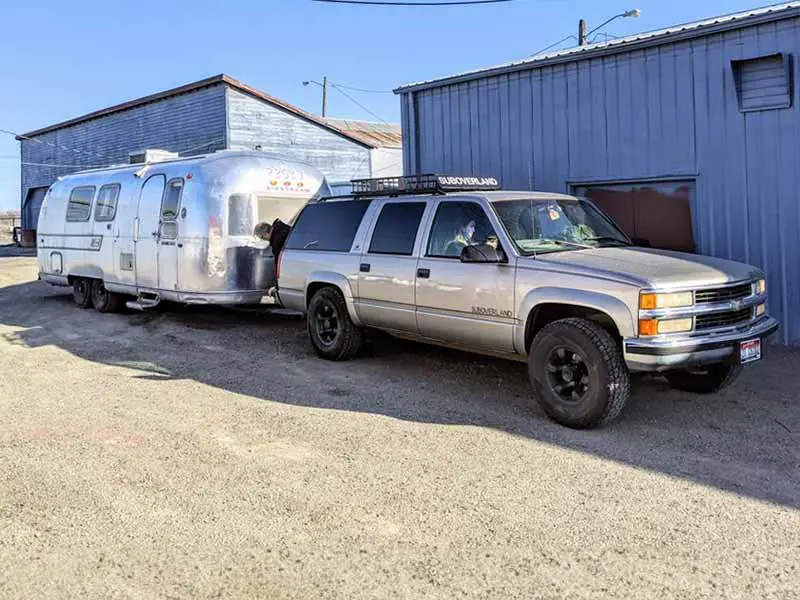
Weight Distribution and Its Impact on Tire Pressure
Weight distribution is about how the weight of your vehicle is spread out. Imagine a seesaw in a playground. If both sides have the same weight, it stays balanced. But if one side is heavier, it goes down. Similarly, a vehicle can have more weight at the front or the back.
Why Does Weight Distribution Matter?
- Tire Wear: If one part of your vehicle is heavier, the tires under that part will wear out faster.
- Driving Control: A balanced vehicle is easier to steer and control. If it’s not balanced, it might not handle turns or stops as well.
- Tire Pressure Needs: Different weights on your tires mean they might need different amounts of air.
Front and Rear Axles
Every vehicle has two main parts that hold the wheels: the front axle and the rear axle.
- Front Axle: This holds the front wheels. Often, the engine is at the front, so this part can be heavier.
- Rear Axle: This holds the back wheels. In trucks, if you’re carrying a lot of stuff, the back can be heavier.
How Weight Affects Tire Pressure
- More Weight Needs More Air: If a tire is supporting more weight, it needs more air to stay firm and work well.
- Less Weight Needs Less Air: If there’s less weight on a tire, it doesn’t need as much air.
Checking Pressure Based on Weight
- Know Your Load: If you’re driving a truck and carrying heavy things, know how much they weigh. This helps you figure out how much air your tires need.
- Adjust for Trips: If you’re going on a trip and packing a lot in the back, you might need to add more air to the rear tires.
- Regular Checks: Even if you don’t change what you carry, it’s good to check your tire pressure often. Roads and driving can change how weight affects your tires.
Tips for a Balanced Vehicle
- Even Packing: If you’re loading your vehicle, try to spread the weight evenly. This helps your tires wear out at the same rate.
- Know Your Vehicle: Some vehicles naturally have more weight at the front or back. Check your owner’s manual or ask a mechanic if you’re unsure.
- Adjust Pressure as Needed: Remember to change the air in your tires if you change how much weight they’re carrying.

Light Trucks Vs 3/4 and 1 Ton Trucks
Understanding the tire pressure difference between light trucks and heavier 3/4 and 1 ton trucks is crucial for optimal vehicle performance and safety. Here’s a breakdown focusing specifically on the differences in typical tire pressures for these truck categories.
Light Trucks
Characteristics:
- Light trucks are designed primarily for personal use or light commercial tasks.
- They often prioritize a balance between comfort and utility.
Typical Tire Pressures:
- Front Tires: Generally, you might find pressures in the range of 30 to 35 PSI, depending on the specific model and tire size.
- Rear Tires: When not heavily loaded, the rear tires might also be in the 30 to 35 PSI range. However, if carrying a significant load, this could increase to around 40 PSI to support the added weight.
3/4 and 1 Ton Trucks
Characteristics:
- These trucks are built for more substantial tasks, often used in commercial settings or for heavy-duty towing.
- Their structure is designed to handle heavier loads consistently.
Typical Tire Pressures:
- Front Tires: Given the robust nature of these trucks, the front tires typically have pressures ranging from 50 to 65 PSI. The exact pressure can vary based on the truck’s specific design and the tire’s size and type.
- Rear Tires: The rear tires, especially when supporting heavy loads or towing, can have pressures ranging from 60 to 80 PSI. Again, the exact number will depend on the truck’s specifications and the nature of its use.
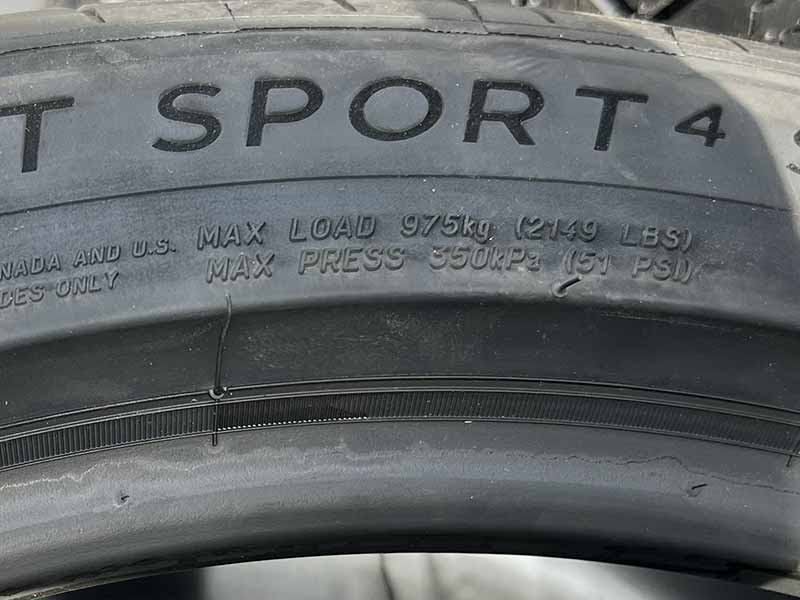
Tire Load Ratings and Maximum Inflation Pressures
Tire Load Rating, often referred to as Load Index, is a numerical code associated with the maximum load a tire can carry at the speed indicated by its speed symbol under specified conditions. It’s crucial for safety, performance, and the longevity of the tire.
- How It’s Represented: The load rating is usually a two or three-digit number found on the tire sidewall, following the tire size. For example, in the tire specification “225/50R16 92V”, the number “92” is the load rating.
- What It Means: Each load rating corresponds to a specific weight capacity. For instance, a load rating of “92” might correspond to a maximum load of 630 kg (1389 lbs) per tire.
Maximum Inflation Pressure
Max Pressure is the highest amount of air pressure that the tire can safely hold. It’s not necessarily the recommended driving pressure.
- Locating the Info: This value is typically found on the tire’s sidewall, often stated as “Max. Press. XX PSI” where XX is the value in pounds per square inch (PSI).
- Purpose: This value ensures that the tire isn’t overinflated, which can lead to reduced traction, uneven wear, and increased risk of punctures or blowouts.
The Relationship Between Load and Pressure
- Directly Proportional: As a general rule, the more weight (load) you put on a tire, the more air pressure it requires to support that weight. This is why heavy-duty trucks, designed to carry substantial loads, often have higher recommended tire pressures.
- Oversized Tires Consideration: Larger tires have a greater air volume. So, even if two tires have different maximum inflation pressures, they might still support the same weight if one is significantly larger. This is because weight capacity is a function of air pressure multiplied by air volume.
Importance of Adhering to Ratings and Pressures
- Safety: Overloading a tire beyond its load rating or inflating it beyond its maximum pressure can be dangerous, leading to tire failure.
- Tire Longevity: Proper adherence ensures even tire wear, extending the tire’s lifespan.
- Optimal Performance: For best vehicle handling and fuel efficiency, it’s crucial to maintain tire pressures close to the recommended values, considering both the vehicle’s and tire’s specifications.
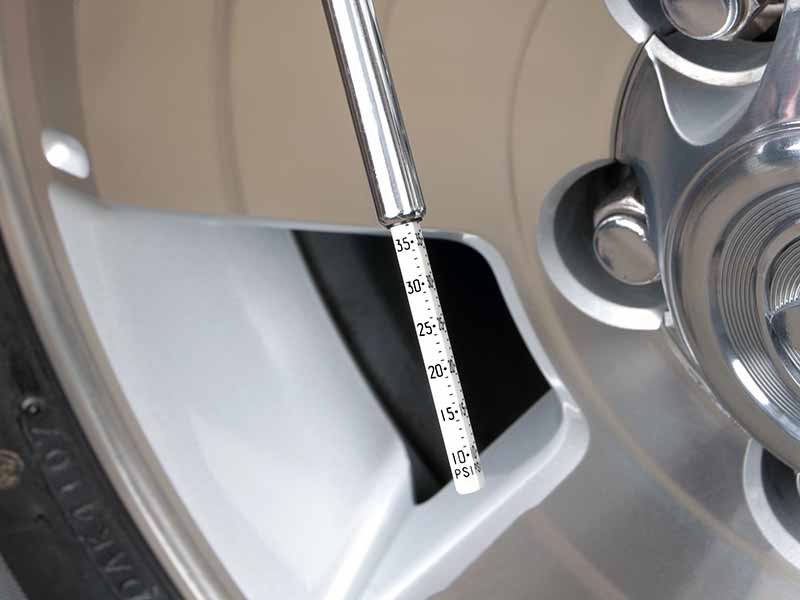
Understanding Tire Pressure Basics
Tire pressure is simply the amount of air inside your tire. Think of it like blowing up a balloon. The more air you put in, the tighter the balloon feels. Similarly, the more air you put in a tire, the harder it becomes. The right amount of air makes sure your tire touches the road in the best way.
Why is Tire Pressure Important?
- Safety: The right tire pressure helps your vehicle grip the road better. This means you can steer, stop, and start your vehicle safely.
- Tire Life: If your tire has the correct amount of air, it will wear out evenly and last longer.
- Fuel Economy: The right tire pressure can help your vehicle use less fuel. This means you can drive further on the same amount of gas.
How to Check Tire Pressure
- Get a Tire Pressure Gauge: This is a small tool that measures the amount of air in your tire. You can find it at auto stores or online.
- Find the Valve on Your Tire: This is a small pin-like part on your tire where you can add or remove air.
- Press the Gauge onto the Valve: When you do this, the gauge will show a number. This number tells you the amount of air in your tire.
- Compare with Recommended Pressure: Every vehicle has a recommended tire pressure. You can usually find this on a sticker inside the driver’s door or in the vehicle’s manual.
How Often to Check?
- Regularly: It’s a good idea to check your tire pressure at least once a month.
- Before Long Trips: If you’re planning to drive a long distance, check your tire pressure before you start.
- When Weather Changes: Cold or hot weather can change the air inside your tire. So, when the seasons change, it’s a good time to check.
Resources
Below are some links you may find helpful when learning about tires
Final Thoughts
While every tire has a maximum inflation pressure, it’s the recommended pressure that ensures the best balance between performance and wear.
Whether you drive a light truck or a heavy-duty 3/4 or 1 ton truck, being aware of the differences in front and rear tire pressures, and adjusting them based on your load, can lead to a smoother, safer drive.
Regular checks and adjustments, coupled with knowledge about your vehicle’s specific needs, will keep you on the right track.
Good luck and happy motoring.
